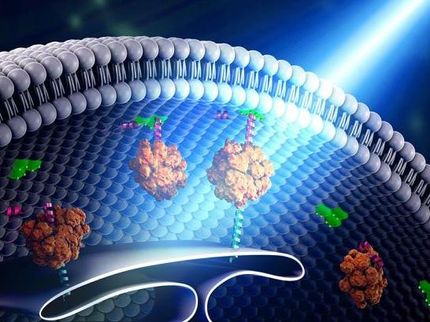Fast, personalized therapy choices through light-based cell sorting
Advertisement
cells and biomolecules circulating in our blood carry diagnostic information that, when analyzed, present a key for highly effective tailored therapy concepts. In order to unlock this information, researchers at the Fraunhofer Institute for Laser Technology ILT have developed AnaLighter, a microchip-based sorter. It uses light to detect clinically relevant cells in a blood sample and then carefully isolates them for further analysis. AnaLighter will be presented for the first time at Medtec 2016 in Stuttgart.
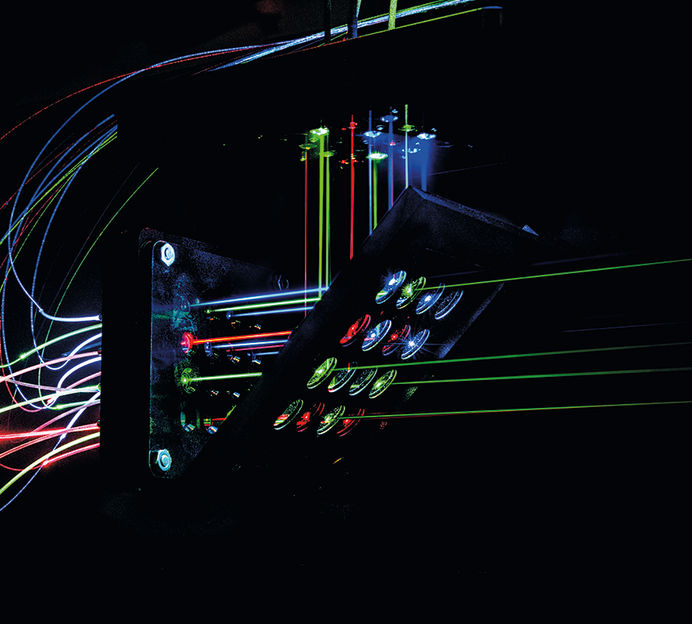
Laser beam matrix for detecting diagnostically relevant cells in blood.
© Fraunhofer ILT, Aachen, Germany / Volker Lannert.
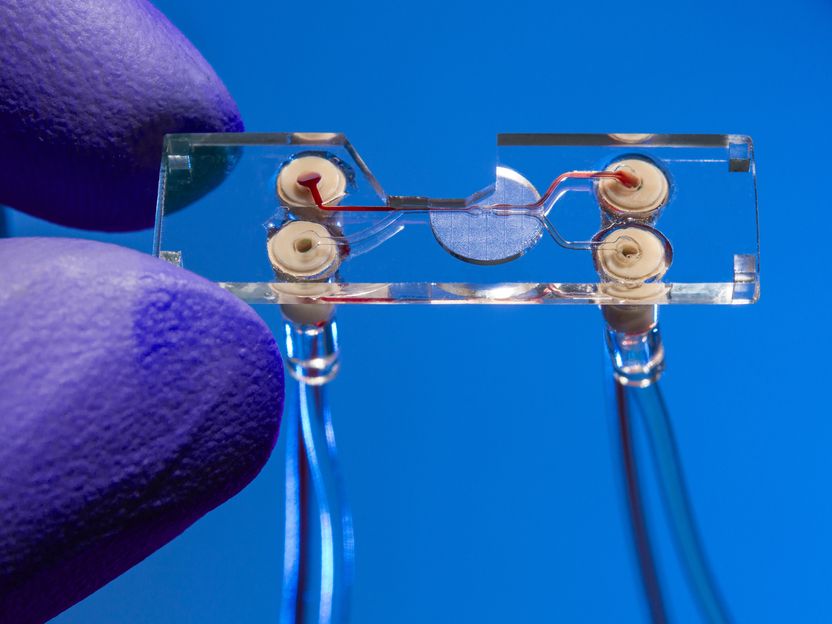
Sorting chip for analyzing and isolating cells in a blood sample.
© Fraunhofer ILT, Aachen, Germany / Volker Lannert
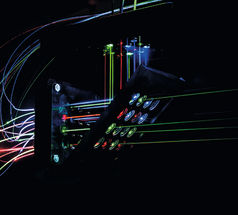
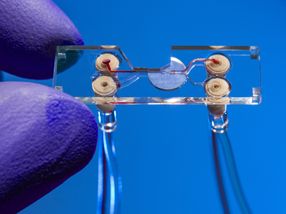
AnaLighter, a microchip-based fluorescence activated cell sorter (µFACS), can detect up to sixteen different cell types and direct them into separate microwells. Carefully sorting the cells is done in a microfluidic sorting chip which does not affect their vitality and ability to divide.
Sorting cells with light
Cells exhibit characteristic proteins that are embedded in the cell membrane. These proteins each possess a typical structure to which marker molecules can specifically bind. When labelling this marker molecules with a fluorescent dye, they can be made visible by exciting them with light of a defined wavelength. AnaLighter features sixteen laser beams with different wavelengths that are focused into the sorting chip’s channels, which are only a few micrometers wide. There, the lasers cause the marked cells to emit light. The fluorescent light generated in the laser focus is then guided via a fiber network to an optical detection system, where the fluorescence data is analyzed and the cell, which is encoded by particular fluorescent dyes, is identified. In the next process step, infrared laser light then helps to direct the identified cells in a targeted manner through a network of fluidic junctions and thus sort them. Cells are sorted based on the fluorescence data measured previously.
AnaLighter’s sorting process takes place via an optofluidic switching process whereby a cell is always directed at a junction into the channel that was previously exposed to IR light. Thanks to the combination of several of these optically switchable junctions, it is possible to construct complex sorting structures; in the case of AnaLighter, an initial microfluidic channel can be separated into up to sixteen channels. These channels each flow into a microwell and facilitate the simultaneous sorting of sixteen different cell types.
Major time savings in diagnosing infectious diseases and rapid resistance testing
For diagnosing infectious diseases, AnaLighter is extremely well-suited for detecting and isolating pathogens in the blood. Particularly in the case of bacterial pathogens in the blood (sepsis), the isolated pathogen can be cultivated further and used in in vitro antibiotics efficacy testing. It takes two hours for it to isolate and store the pathogen in a miniaturized culture vessel. A total of around nine hours are needed for further propagation as well as tests with different antibiotics. Once completed, an individualized antibiotic profile is available for treating a bacterial infection in the patient’s blood.
Compared to traditional resistance tests for bacterial infections, diagnosis using AnaLighter saves up to 40 hours of valuable time. Regarding the choice of therapy for partial or multi-resistant hospital germs, this time saving may make all the difference between life and death.
Detecting tumors early
Even at a very early stage of cancer, tumor cells circulate in the blood. Detecting them is a way to diagnose a cancer illness early, before symptoms appear or imaging procedures can detect it. AnaLighter can identify tumor cells circulating in the blood and isolate them for further clinical analysis. These isolated cells are then available for knowledge-based, personalized patient therapy choices with a significantly higher chance of therapeutic success.
Multiplex diagnostics: Detect many illnesses with one analysis
AnaLighter’s sixteen different detection channels can be used to simultaneously identify different marker molecules in the blood. Such multiplex diagnostics make it possible to detect sixteen different illnesses with just one marking step and one measuring cycle. In a multiplex analysis of this type, a microparticle cocktail can be used to specifically bind to disease markers in a blood sample for detection using particle fluorescence. In this way, general practitioners performing annual routine checkups could use a single test to analyze a blood sample and get an early diagnosis of a host of possible diseases, and thus prevent the most widespread illnesses, such as cardiovascular disease.




